These historical gems that withstood fires, war, and famine remind us to this day of NYC’s resolve, legacy, and determination to feed the hungry, home the immigrants, heal the poor, and thrive.
New York City’s mysterious past left us with a legacy of abandoned buildings, cemeteries, hospitals, and even an occasional boat graveyard. However, how many structures are considered world patrimony and worthy of preservation?
Neponsit Hospital
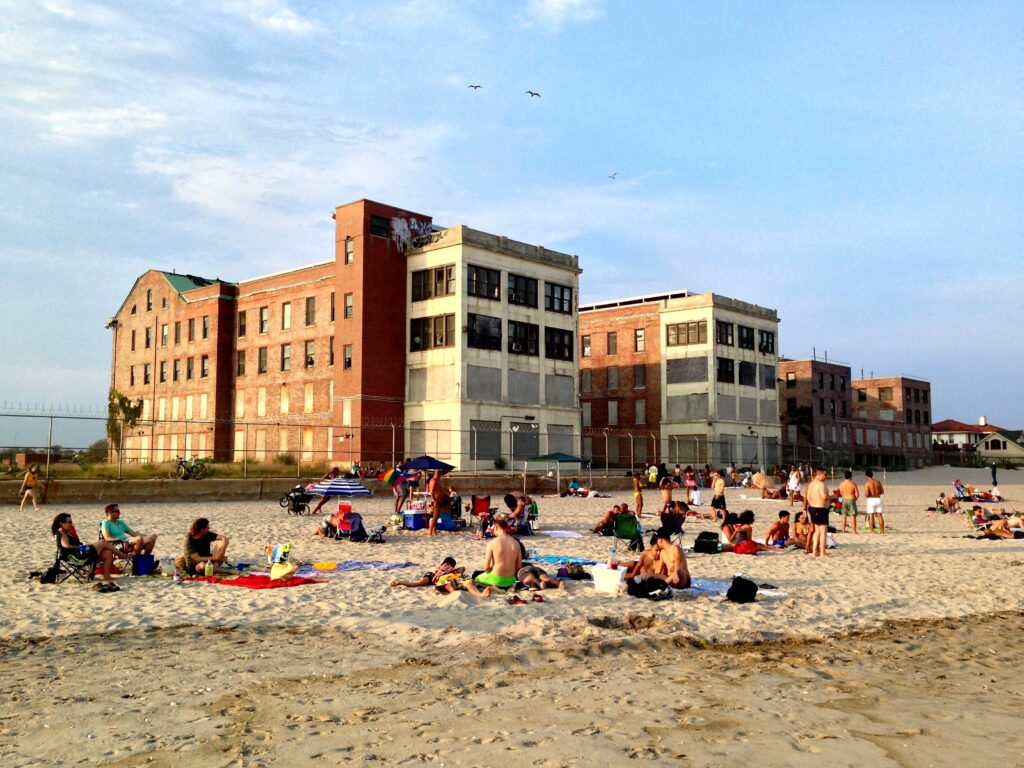
Once at tuberculosis sanatorium, the hospital operated from 1915 to 1955 on the shores of the picturesque Rockaway Beach. The main building is an architectural marvel designed by McKim Mead and White.
During World War II, the hospital attended military veterans. Later, it became a retirement nursing center that eventually closed in 1998. In 1907 the construction of the hospital started with a sizable donation of $125,000 by Rockefeller. Inspired by “smiling Joe,” a bedridden child-patient suffering from spinal tuberculosis, Theodore Roosevelt advocated for the project. The result was stunning, with a capacity for 122 patients and balconies facing the ocean. The project gained momentum over the next two decades, including on-site artwork and gardens. In 1943, patients were subject to evacuation by the mayor. To reduce the oil shortage, the hospital shut its doors. In 1945, public health services used the hospital to treat veterans with tuberculosis. The hospital closed in 1955 and was eventually repurposed in the 1980s as a home for elderly patients. In 1998, 282 elderly patients were evacuated, and two died under the cloak of darkness. Afterward, the federal government concluded that the evacuation endangered patients’ lives and was unnecessary. Since then, the building has stood as a testimony to New York’s philanthropy, public good, and history.
Brooklyn Navy Yard Hospital
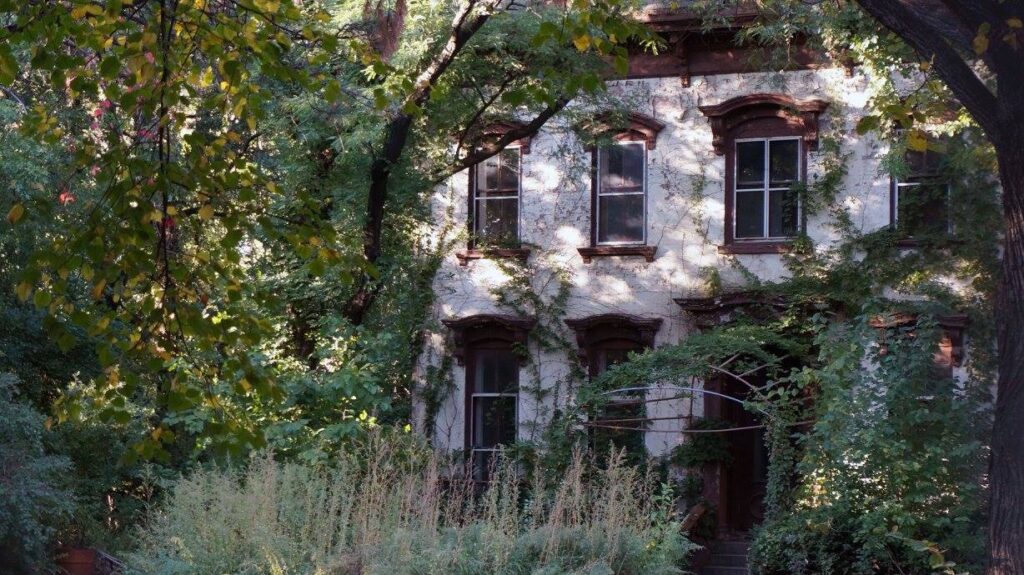
The Brooklyn Naval Hospital is one of the oldest hospitals in the United States. It operated between 1838 and 1948. The complex is a New York City landmark on the National Registry of Historic Places. In 1811 the hospital was declared a health risk, unsanitary due to a flooding pond and mildew. In 1825, the secretary of the Navy purchased extra land and reestablished the hospital at a different location. In 1838, the completed hospital continued its expansion, including a pharmaceutical laboratory. By 1863, the hospital housed up to 450 patients. During the first World War, the complex expanded with another wing, a nurse’s quarters, and additional four buildings. By this point, pushed to capacity by the war, the hospital could accommodate 3,000 patients. All 37 buildings were repurposed to accommodate 65,187 patients at the beginning of World War II. The hospital was dissolved in 1948 and has since stayed abandoned. Currently, all the structures are awaiting conversion into production space. The remaining buildings include a surgeon’s house, main building, quarters, nurses housing, carriage houses, stables lumber shed, and the morgue. The adjacent cemetery houses around 8,000 graves.
Renwick Smallpox Hospital
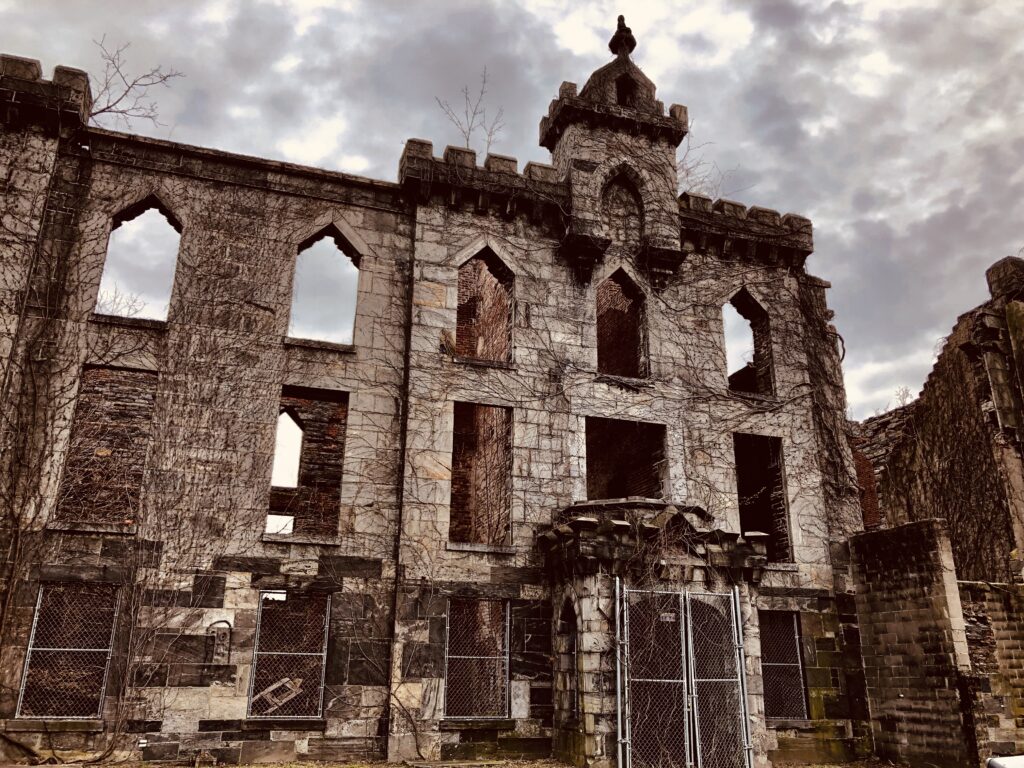
The hospital’s impressive, regal structure is reminiscent of European castles. The Smallpox Hospital first opened on Roosevelt Island in Manhattan in 1856 and housed about a hundred beds. It was listed on the National Registry of Historic Places in 1972 and designated a landmark in 1976. Currently, it is the only ruin on the list of New York City’s landmarks. Pending a 4.5 million stabilization project, the ruin will be available for viewing.
The hospital structure is reminiscent of a Gothic revival style. Curiously, all the windows on the third floor are unique and taper into pointed arches. We can only speculate what prompted such a departure from a traditional Gothic style. In 1875, the hospital closed its doors and became a medical training center. Sadly, since the 1950s, the structure underwent continuous decline. Folks can get a truly spectacular view of this architectural marvel from the west by traveling on the East River. Given its beauty, the Renwick hospital became a staple of popular culture and literature. It was featured in the Shadow Hunter series, City of Bones, Grand Theft Auto IV, Marvel comics, Spider-Man, and the 1993 movie For Love or Money.
The Ellis Island Immigrant Hospital
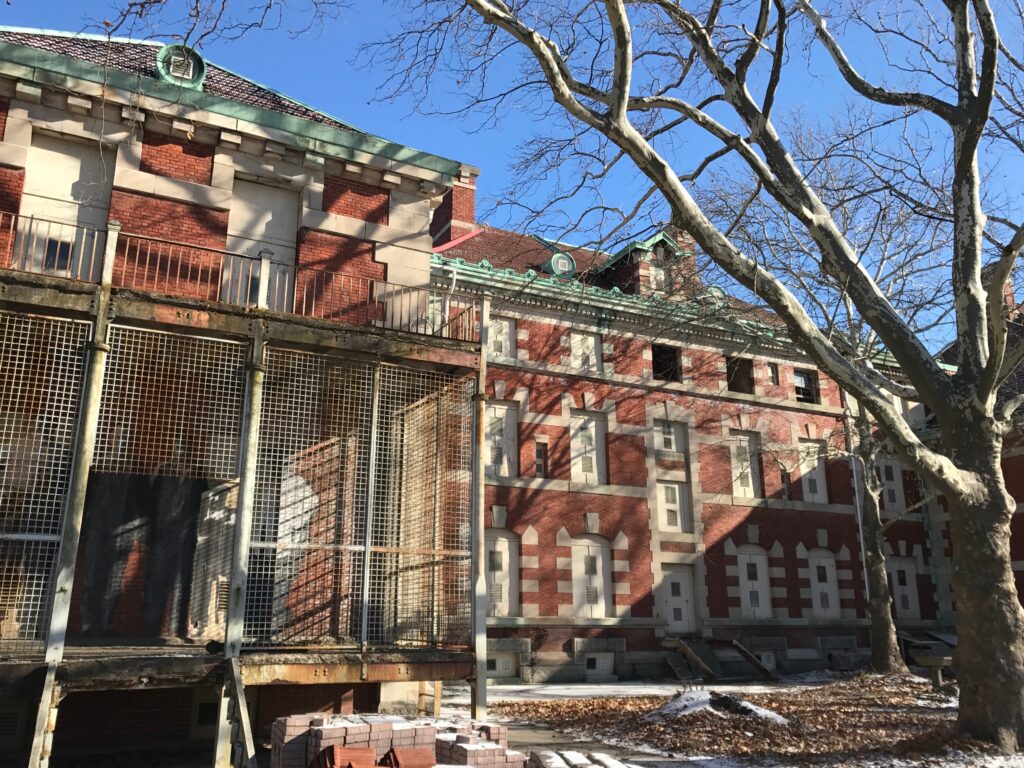
Ellis Island Immigrant Hospital operated between 1902 and 1951 and became a part of the Statue of Liberty national monument. Managed by the nonprofit Save Ellis Island Foundation, the area has been off-limits to visitors since 1954. The hospital consisted of two wards, the general treatment area, and the contagious disease pavilion. The facility treated sick immigrants whose conditions prohibited entry according to the US custom laws. The protocol was to deport the patients following rehabilitation. Since 2014 limited public hardhat tours have been available through the foundation.
Ellis Island opened as an immigration station in 1892. Repurposing former structures from the pre-existing Fort Gibson, the state of New York began to process immigrants. By 1906, immigration into the United States increased sharply. To meet the demand, the hospital expanded from 125 beds to 1,000,000. Patients included immigrants, psychopathic/insane individuals, and the poor.
During World War I, the hospital closed to reflect the national immigration policy. The doors reopened in 1919. The hospital continued its expansions until 1954, when it was closed and abandoned. In 1996, the World Monuments Fund recognized the hospital as one of the hundred most wonderous properties. The estimate to recover the Ellis Island Immigrant hospital exceeded 3 million federal funding.
In 2014 Unframed – Ellis Island, by the French Street artist JR, was installed on the murals of the hospital buildings. Portrayal in the media includes Forgotten Ellis Island, a documentary by Laurie Conway that explores the hospital’s history, the immigrant experience, and architecture.
New York Farm Colony and Seaview Hospital
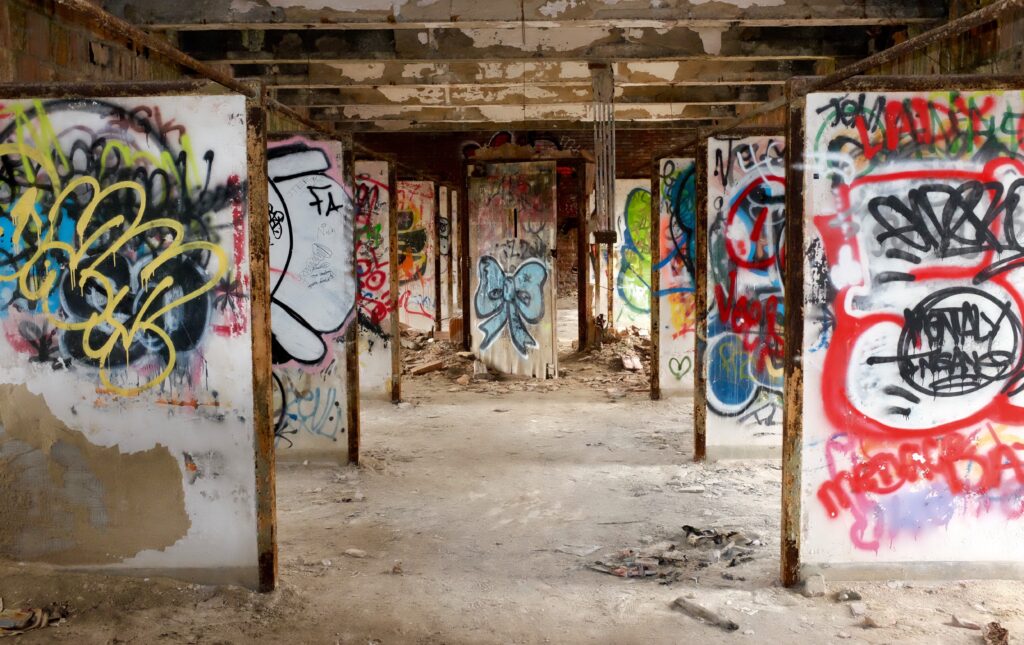
New York Farm Colony and Seaview Hospital borders the side of the Richmond County Poor Farm, a 91-acre lot acquired by the city in 1830.
The Seaview hospital has assorted past and ghosts that allegedly haunt the premises until this very day. According to urban rumors, workers and visitors supposedly have heard the souls of former patients still walking and calling out. Reportedly, tunnels underneath the buildings still contain artifacts from the TB epidemic. Previously, the area was home to a cholera hospital and an insane asylum. The inmates earned their keep by managing the farm. The hospital was adjacent to a functioning potters field until 1905.
In 1902, the structure was rechristened to New York City Farm Colony. The area included 16 buildings, dining/kitchen, laundry/industrial, shops, nurses residences, and a morgue. In 1961, the farm merged with Seaview Hospital to reinvent itself as a geriatric hospital. Since 1973, most structures have slowly fallen into decay and any remaining residents left the premises back in 1975. In the 1980s, the farm served as baseball fields situated among the long-ago abandoned buildings.
If you’re in the mood to indulge in the city’s rich history, visit the NYC ghosts that roam the hallways of the Seaview Hospital which, to this day, inspire artists and filmmakers alike.




